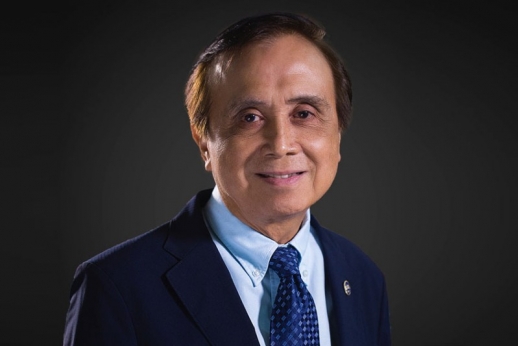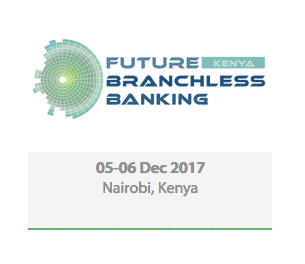
Philippines
Capital: Manila; GDP growth (annual %) 2016 : 6.9%-
Philippines' Duterte calls North Korea's Kim a 'fool' over nuclear ambitions
Philippine President Rodrigo Duterte on Wednesday described North Korean leader Kim Jong Un as a "fool" and a "son of a bitch", just days before Manila hosts an international conference certain to address Pyongyang's long-range missile tests.
Duterte held nothing back in rebuking Kim for "playing with dangerous toys", setting the stage for next week's rare get-together, to be attended by foreign ministers of all the nations involved in the standoff on the Korean peninsula.
North Korea is determined to develop a nuclear-tipped missile capable of hitting the United States and officials in Washington said Saturday's test of an intercontinental ballistic missile showed it may be able to reach most of the country.
More > -
Philippines: Rebels Back ‘Fatwa’ Against Violent Extremism
The major Moro rebel group in the southern Philippines has declared its support for a “fatwa” against violent extremism before declared by a senior Islamic religious leader in Mindanao.
A statement by the Moro Islamic Liberation Front (MILF) released on July 4 said it “fully endorses and supports such edicts without fear and reservation.”
More > -
Ernesto M. Pernia Secretary of Socioeconomic Planning of the National Economic and Development Authority (NEDA).
In this interview with The Worldfolio, Mr. Ernesto M. Pernia (PhD), Secretary of Socioeconomic Planning at the Philippines’ National Economic and Development Authority, speaks about efforts to bring about development and better social inclusion and the ‘0-10 point’ socioeconomic schedule.
On May 9th of 2016, president Rodrigo Duterte was elected with additional than 39% of the vote giving him a 15-point victory over the second best performing candidate. While a lot of western media were caught offside by the landslide victory, the people of the Philippines truly believe in the message of social inclusiveness, economic decentralization and social order; as shown by his 91% approval rating in a little while next the election. What is your take on the election results and what are the major drivers behind it?
More >
- Key Facts
-
Full name: Republic of the Philippines
Population: 93.6 million (UN, 2010)
Area: 300,000 sq km (115,831 sq miles)
Major languages: Filipino, English (both official)
Major religion: Christianity
Life expectancy: 66 years (men), 73 years (women) (UN)
Monetary unit: 1 Philippine peso = 100 centavos
Main exports: Electrical machinery, clothing, food and live animals, chemicals, timber products
GNI per capita: US $2,060 (World Bank, 2010)
Internet domain: .ph
International dialling code: +63
-

Climate change laws around the world
2017/05/14There has been a 20-fold increase in the number of global climate change laws since 1997, according to the most comprehensive database of relevant policy and legislation.
The database, produced by the Grantham Research Institute on Climate Change and the Environment and the Sabin Center on Climate Change Law, includes more than 1,200 relevant policies across 164 countries, which account for 95% of global greenhouse gas emissions.
-
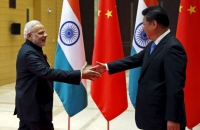
Asia Economic Roundup: July 2016
2016/07/18Without a doubt Britain’s decision to abandon the European project will be remembered globally as a wake-up call for political elites around the world. It seems the people chose to go against immediate economic interest and accept an extra financial turmoil in order to address deeply seated social and identity issues.
Although Asia’s exposure to the UK is relatively limited and this is not exactly a “Lehman Moment”, nonetheless we can expect a lively debate as policymakers in Asia look for an appropriate response to address the needs of vulnerable households.
-

Philippines Year in Review 2015
2015/12/27Strong domestic request and increased government spending helped sustain high levels of economic expansion in the Philippines throughout 2015, though a slight slowdown was observed late in the year as request from the country’s major trading partners eased.
-
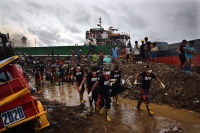
The Philippines Year in Review 2014
2015/02/14Despite declining from the highs of 2013, the Philippines’ economy showed marked resilience in 2014, as it battled back from the impact of a devastating typhoon late last year to give a strong in general performance.
Economic increase was driven by strong foreign direct investment (FDI), which surpassed government targets well before the end of 2014, alongside remittances and expansion in the real estate, business process outsourcing (BPO) and mining sectors.
-
.jpg)
Two investment grades secured
2014/01/03The first upgrade came on March 27 from Fitch, and Standard & Poor’s followed just over a month later, lifting the Philippines out of the junk bond status and placing it among the world’s elite 70 nations deemed suitable for business, where government and the private sector both are capable of paying their obligations. Ultimately, this translates into lower borrowing costs and, of course, higher investor confidence.
Thanks to robust GDP growth, the number of bank loans has increased, while asset quality has improved, says the report. -
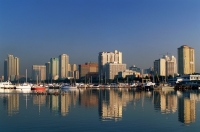
The Philippines defies external challenges to notch up growth
2013/10/11Strong domestic request for a broad range of goods and services is galvanising economic increase in the Philippines, helping the country to buck a regional slowdown. Consumer confidence remains high, buoyed by news that the government plans to roll out several large-ticket infrastructure projects, in part aimed at creating jobs. However, the Philippines remains vulnerable to a lot of of the external factors that are weighing on its peers.
Consumers show confidence
-
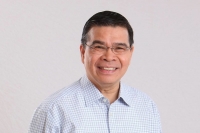
Secretary Rodolfo A. Salalima Department of ICT of the Republic of The Philippines
2017/04/19Secretary Rodolfo A. Salalima of the Department of ICT says the government has three priority areas for ICT: expanding the broadband network with public free Wi-Fi; E-Government, with the introduction integrated online government portal; and moving the BPO services to the countryside.
Could you please share your views on the impact that the government’s 10-point Economic Strategic Plan and the National Broadband Plan are producing in the ICT sector?
-

Ricardo A. Balbido, CEO and President of PVB
2013/05/18The Philippine Veterans Bank (PVB) was prime conceived in 1956, next a reparations agreement, as part of a peace treaty, had been signed with Japan. A portion of the money provided by Japan, which invaded the archipelago in 1941 during World War II, was put into a trust fund for veterans of the war.
- Philippines News
-
- SOCIAL / CSR: Philippines' Duterte calls North Korea's Kim a 'fool' over nuclear ambitions
- SOCIAL / CSR: Philippines: Rebels Back ‘Fatwa’ Against Violent Extremism
- CONSTRUCTION / INFRASTRUCTURE: Ernesto M. Pernia Secretary of Socioeconomic Planning of the National Economic and Development Authority (NEDA).
- BUSINESS / TRADE: Philippines, China restore direct talks to discuss security, trade issues
- EDUCATION: Higher earning Why a university degree is worth more in some countries than others
- LOCAL GOVERNMENT: Rebalancing Philippine foreign policy
- Trending Articles
-
- BOTSWANA: Bill Gates sees US likely to maintain aid levels for Africa
- NIGERIA: The city that won't stop growing, Lagos
- EUROPEAN UNION: UK seeks to 'align' with EU on data protection rules
- ANGOLA: Buhari Among African Presidents Who Lack Faith in Own Health Systems
- PAKISTAN: Qatar launches new direct sea route to Pakistan
- BOTSWANA: Africa’s economic growth in 2016 was driven by East Africa




